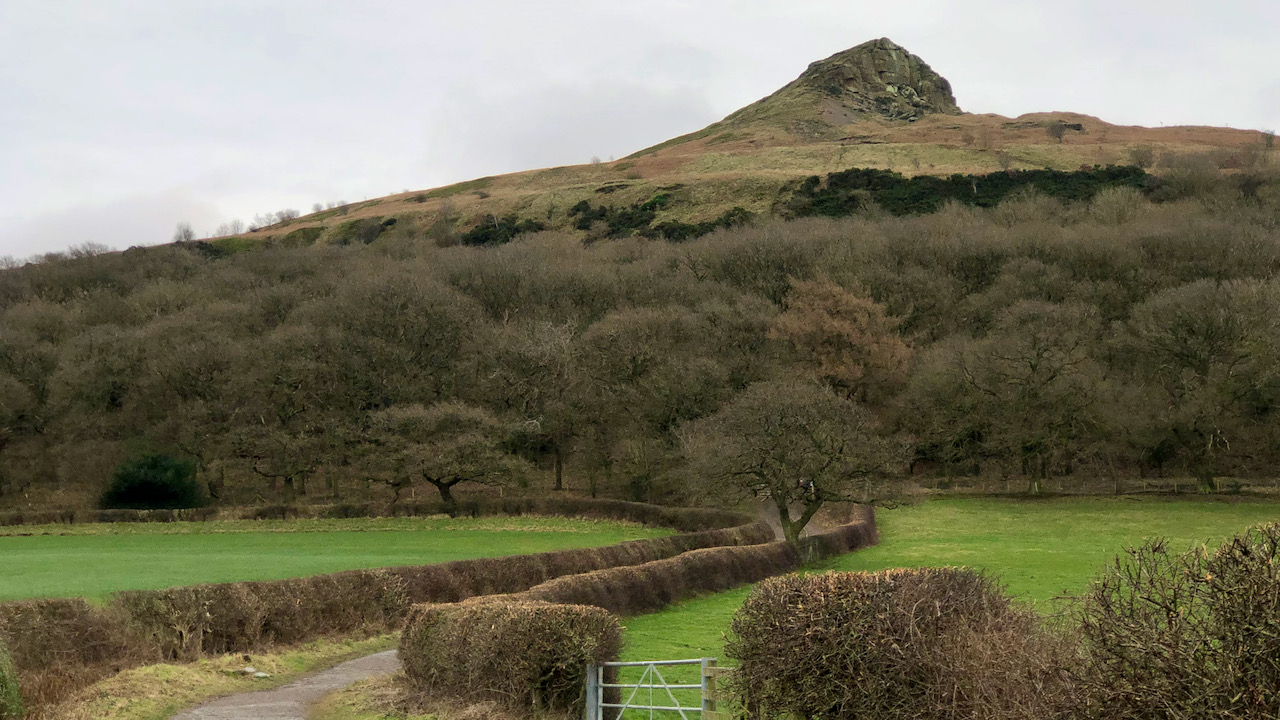Wood Lane — the historical name of the track along which most folk climbing Roseberry Topping will approach the hill. Before the hard graft begins.
It looks as though the hedgerows on either side of the track have recently been cut, most likely mechanically flailed.
In order to be stockproof and to offer a diverse habitat for wildlife, hedges must be maintained in a dense and bushy state, as neglect may result in the hedge becoming straggly and untidy, leading to a reduction in cover at its base. Regular cutting is the best way to achieve this.
Traditionally, hedges underwent either manual cutting or laying, a laborious process requiring care and attention to each individual plant. However, this approach is very labour intensive. On the other hand, mechanical flail cutting is cost-effective, but entails repetitive cutting at the same point, potentially causing hedge trees to develop gnarls and become unhealthy. This practice can result in a gradual deterioration of hedge quality, contributing to a loss of biodiversity. Additionally, repeated cutting may lead to the decline of mature hedgerow trees, as older ones die off, and insufficient younger saplings are allowed to reach maturity. To address these issues, hedges are subjected to flail cutting rotationally, typically every 2 to 3 years. Berries for wildlife grow on last years’s branches.
MPs recently discussed granting legal protection to hedges. Previous regulations prohibiting certain farming activities around hedges, under the “Cross Compliance” framework tied to direct payments, expired on 31st December. This change being part of the ongoing regulatory adjustments post-Brexit.
The RSPB, Wildlife Trusts, and Woodland Trust are strongly pushing for swift action to reinstate these crucial safeguards. These conservation organisations are seeking stronger safeguards for hedgerow protection. The current Hedgerow Regulations, focusing on “important” hedgerows, lack the comprehensive coverage provided by the previous Cross Compliance, which protected all farm hedgerows receiving basic payments.
Cross Compliance, until its termination on 31st December, included hedgerow cutting restrictions during the bird nesting season (March 1st to August 31st), with mandatory two-metre buffer strips prohibiting crop cultivation and restricting chemical use. The government’s long awareness of Cross Compliance’s ending has prompted the call to issue alternative regulations promptly.
Under the situation as it is today, many farmers may believe that they can now cut their hedgerows in the spring and summer. This has the potential to inflict severe harm upon wildlife, as these hedges are crucial for nesting, shelter, and sustenance.
The Government must urgently restore the same protections as under Cost Compliance. While preserving the no cutting season is crucial, allowing winter hedge trimming is necessary, but balanced by a rotational cutting regime to ensure the berry crop vital to winter migrants.
A year ago, the Government did pledge to establish or restore 30,000 miles of hedgerows by 2037, recognising their dual role in carbon storage and providing sanctuaries for diverse animals1‘High-Tech Aerial Mapping Reveals England’s Hedgerow Landscape | UK Centre for Ecology & Hydrology’. 2024. Ceh.ac.uk <https://www.ceh.ac.uk/press/high-tech-aerial-mapping-reveals-englands-hedgerow-landscape#:~:text=In%20its%20Environmental%20Improvement%20Plan,miles%20a%20year%20by%202050.> [accessed 2 February 2024]. They have also introduced a sustainable farming incentive that has some focus on hedgerow restoration. Farmers can conduct a “Hedgerow Condition Assessment” to manage height, width, and habitat. However, some may not actually implement any practical measures. Basic regulations and Cross Compliance rules set a standard for all farmers. Subsidies should motivate farmers to exceed these basics.
- 1‘High-Tech Aerial Mapping Reveals England’s Hedgerow Landscape | UK Centre for Ecology & Hydrology’. 2024. Ceh.ac.uk <https://www.ceh.ac.uk/press/high-tech-aerial-mapping-reveals-englands-hedgerow-landscape#:~:text=In%20its%20Environmental%20Improvement%20Plan,miles%20a%20year%20by%202050.> [accessed 2 February 2024]

Leave a Reply